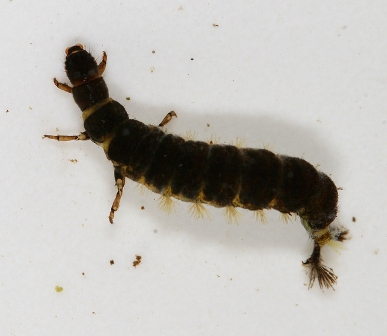Reproduction/Life Cycle
Insects that are members of the order
Trichoptera are considered to be homometabolous, meaning H.
betteni go through a total of four stages of development in
a period of around one year. During the summer months, the
adults appear in the largest numbers. After mating occurs
between a male and female, the female deposits its eggs on rocks
located under the surface of a river/stream or along the shore
of the river/stream. On average, adult H. betteni live
three to five weeks
(Fowler).
About one month after the eggs are deposited, the larvae
hatch. The larvae then travel out on their own, later
constructing silk nets (as previously mentioned in
Nutrition). After achieving full
growth, the larvae build a structure around themselves similar
to a cocoon made of silk and small pepples/sand particles (Fowler). This stage, called the pupal stage, lasts from around two to
three weeks. After this time period, the adult H. betteni
emerges from the "cocoon." The life cycle is then repeated (Net-spinning
caddisfly larvae).
